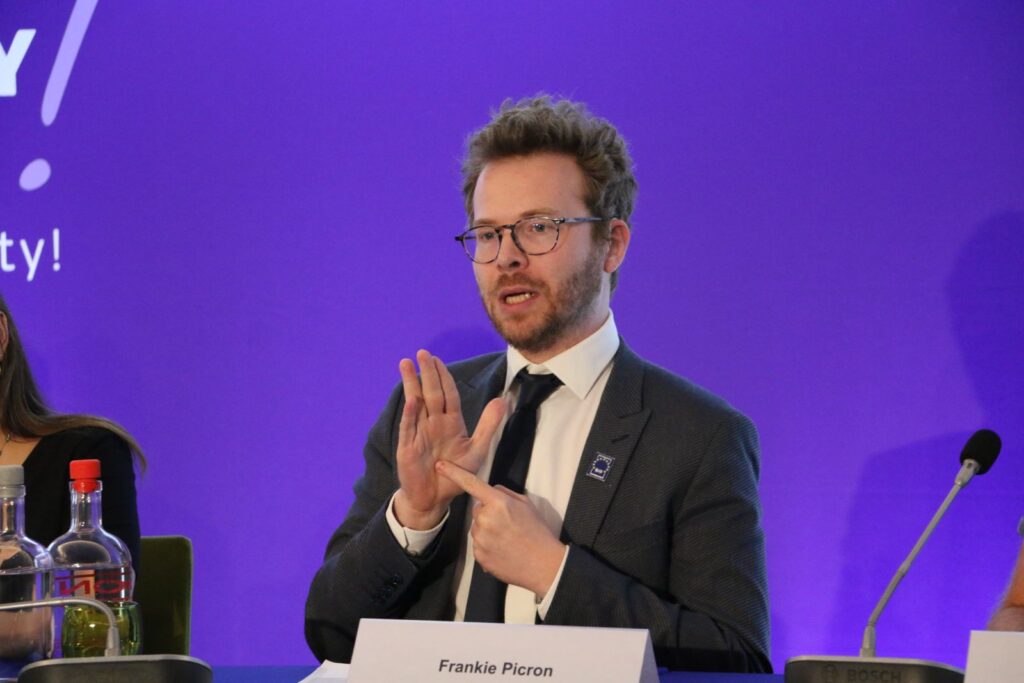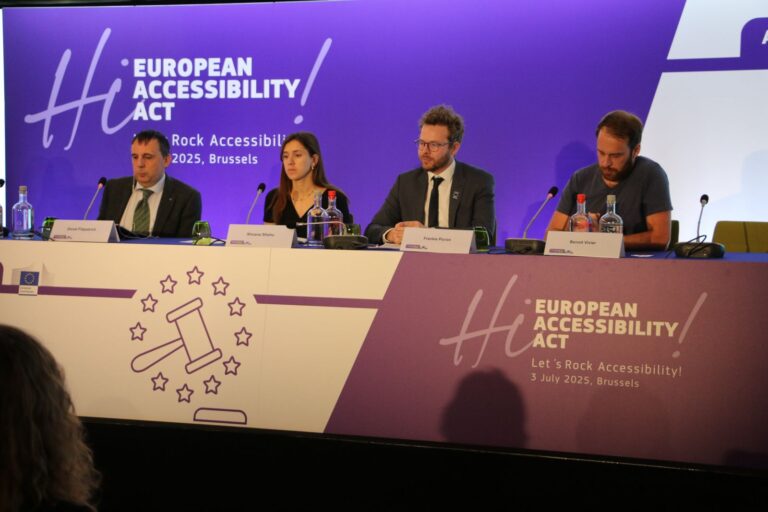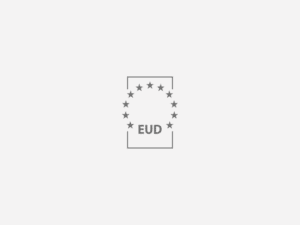On 28 June 2025, the European Accessibility Act (EAA) entered into full application across the European Union. To mark this milestone, the European Accessibility Resource Centre (AccessibleEU) hosted a high-level event in Brussels, bringing together EU institutions, national authorities, the private sector, civil society organisations, and accessibility experts. The event aimed to assess the initial implementation phase of the EAA across multiple sectors, including ICT, banking, mobility, built environments, and public procurement.
The European Union of the Deaf (EUD) was represented by its Executive Director, Mr Frankie Picron, who took part in a key panel discussion on telecommunications, audiovisual media services (AVMS), and emergency communications. The Panel session—“When we are improving accessibility through the EAA in Telecom Services, AVMS and Emergency Numbers?”—was moderated by Donal Fitzpatrick, Design Advisor at the Centre for Excellence in Universal Design, National Disability Authority (Ireland). It featured:
- Xhoana Shehu, Policy Manager, Connect Europe
- Frankie Picron, Executive Director, EUD
- Benoit Vivier, Public Affairs Director, European Emergency Number Association (EENA)
- Anna Matamala, Professor at the Universitat Autònoma of Barcelona, Leader of TransMedia Catalonia and Director of the AccessCat Network
The panel focused on opportunities and challenges in enforcing the EAA within the domains of telecom services, emergency numbers, and media, with each panellist bringing perspectives from civil society, research, and policy. EUD’s intervention placed a strong emphasis on functional equivalence for deaf people in the electronic communications, the need for interoperable emergency services across Member States, and the continued lack of obligations regarding national sign language access in the AVMS framework.

EUD Recommendations
The EUD welcomes the full application of the EAA and its potential to drive systemic reforms for accessibility. However, EUD highlights critical shortcomings in its current implementation regarding deaf sign language users.
1. Emergency communications and cross-border interoperability
Deaf persons face disproportionate barriers in accessing emergency services, especially while travelling within the EU. In most Member States, they must download different mobile apps and, in some cases, register in advance to access emergency communication. This is incompatible with the freedom of movement and the right to equal access. Cross-border interoperability must become a priority in the implementation.
EUD calls for the EU-wide implementation of Total Conversation (video, audio, real-time text), enabling accessible emergency communication in national sign languages.
2. Interoperable standards for accessibility
Many technical standards needed to enforce the EAA are not yet in place. EUD strongly advocates for:
- Immediate harmonisation of ETSI ES 204 009 on Interoperable Total Conversation
- EU level support for the ETSI ES 202 975 on Relay Services, currently under revision, to be published in 2026.
The support services’ standards currently under development – as mandated by the European Commission under the European Accessibility Act – will not be effective for deaf sign language users without these core elements.
3. Trained staff and lived experience in emergency and support services
Accessibility cannot rely on technology alone. Public Safety Answering Points (PSAPs) and related services must employ and train staff with lived experience, including deaf professionals, sign language users, and persons with relevant disability-sector expertise.
4. AI must not replace human-based access
EUD supports innovation, including AI tools, but insists that these must remain optional and supplementary. AI should never replace sign language interpretation or person-to-person access for deaf people.
5. Audiovisual Media Services (AVMS)
EUD underlined the regulatory gap in the AVMS Directive. It does not impose concrete obligations on providers to ensure sign language access. As a result, platforms like Netflix or Disney+ may offer some accessible content, but are not mandated to do so, nor to make that content consistently available or searchable.
The AVMS Directive must be revised to establish binding rules on sign language accessibility across the EU media landscape.
EUD has already published detailed reports on the European Electronic Communications Code (EECC) and the EAA, identifying systemic failures in access for deaf users. A new report analysing the AVMS Directive will be released in Q3 2025, based on evidence collected from EUD’s 31 national member organisations.
What is next?
EUD urges the European Commission and national authorities to move beyond celebration and focus on implementation, compliance, and enforcement. The AccessibleEU event clearly showed that:
- Standardisation processes are too slow, undermining timely compliance.
- Economic operators lack clarity, risking fragmentation across the Single Market.
- User organisations, including those representing deaf sign language users, are not sufficiently meaningfully involved in the enforcement and monitoring process.
EUD calls for:
- The establisment of an EU-level working group to coordinate implementation, enforcement, and user feedback;
- Immediate action to finalise and adopt harmonised standards;
- Stronger legal obligations to ensure access in national sign languages.
Accessibility without sign language access is exclusion. The EAA must live up to its promise of functional equivalence for all persons with disabilities—including deaf sign language users.
The recording of the AccessibleEU event will be made available at:
https://accessible-eu-centre.ec.europa.eu/content-corner/multimedia-content_en










